Budapest's sculptural heritage always holds exciting events. Many destroyed sculptures have been reconstructed in recent years, while existing works have also been relocated. The reading Girls statue appears in the plans for the renovation of Jókai Square in Terézváros, alongside the Jókai statue from 1921. The smaller work was intended as a side figure but completed only and finally erected in 1929 in City Park.
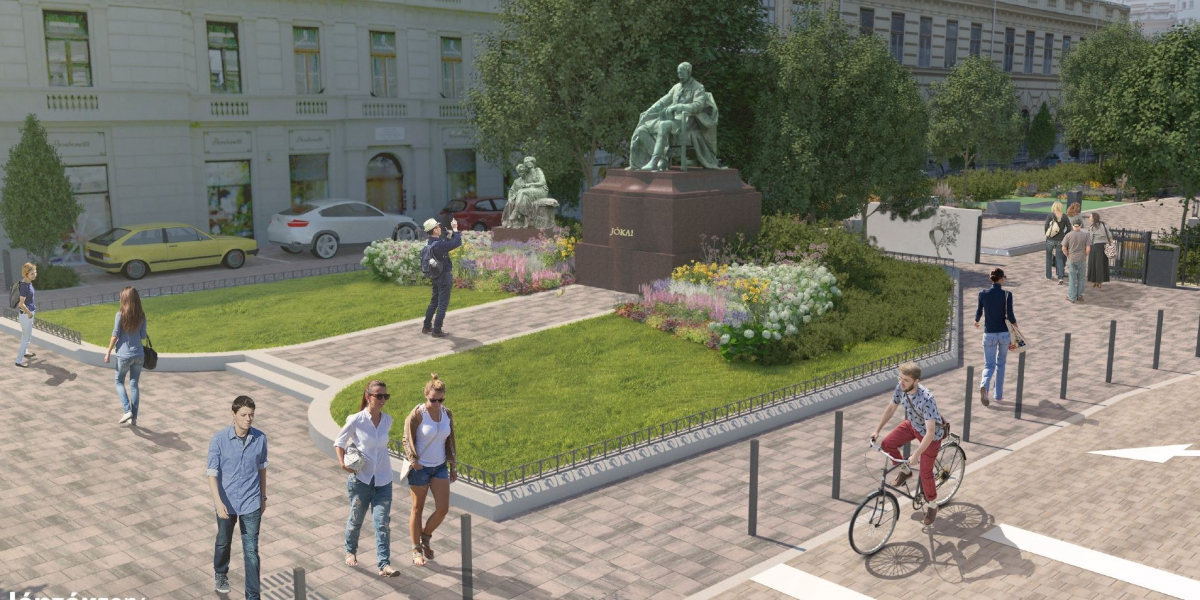
The recently published render of the renovated Jókai Square with the Reading Girls (Photo: terezvaros.hu)
When Alajos Strobl undertook the design of the Jókai statue in Budapest, he intended the statue depicting girls reading a Jókai book as ancillary figures to the writer's monument. The fact that the sculptor's daughter, Zsuzska Strobl and her friend, Teri Kelemen, were the models made it especially personal.
Picture of the Reading Girls from the book Endre Liber, titled Budapest szobrai és emléktáblái (Statues and Memorials of Budapest)
But to briefly discuss the above-mentioned vicissitudes of the relationship between the Jókai statue and Strobl, it is worth turning to the 1911 volume of Ujság, in its issue from 15 January, Alajos Strobl stated:
“The papers reported that the Jókai Committee had entrusted me with modeling the Jókai statue. Please write that not a word of this is true. In fact, if they offered the job, I wouldn’t accept it. I believe in tenders and yes, I would be sincerely happy if the beautiful work for the Jókai statue can be won by young talent. I feel honored to be elected to the jury and to be able to guide the decision on this artistic plan from there. ”
Nevertheless, in the end, Strobl took on the task. Newspapers soon reported that the artist had made a sketch of the sculpture, and what is more, later they reported a location considered ideal by Strobl:
"The artist wishes to erect the sculpture at the confluence of Baross and József Streets, right in front of the monumental Wenckheim palace."
- writes the Ujság in its 21 March 1913 issue. Today this is Szabó Ervin Square in the 8th District, where the well of the Hungarian Truth has stood since 1929. This would have modified the original plan, according to which a statue of Jókai was to be erected in Rákóczi Square.
Sketch of the Jókai statue in Strobl's studio (Photo: Az Érdekes Ujság, June 15, 1913)
Soon, the statue received criticism. The well-known sculptor seems to have failed in the eyes of some contemporaries:
“What Master Strobl reveals to us of Jókai is a retired old country officer who sits as an old man, as we see on the envelope of Méhner’s large family calendar, in rotund boots. In the case of a sculptural work, it doesn't really matter: how the artist depicts a figure. The most important thing are: the overall effect, the unity, the characterising force, the monumental setting. What is monumental about this statue: the boots. The whole thing: a very depressed, petty, anemic work, where we see nothing of the spirit of Jókai. ”
- wrote the 26 June 1913 issue of the Pesti Napló acrimoniously.
Compared to the first sketch criticized above, the final shape of the sculpture changed somewhat, and after the First World War, the finished work was unveiled in Jókai Square on 21 May 1921.
Endre Liber added a bitter remark about the unveiling of the sculpture in his work titled Budapest szobrai és emléktáblái, published in 1933:
“Jókai, the great Hungarian storyteller, reached the pedestal as an orphan, the planned side group, the Reading Girls, could not be made, and he, the great artist of fantasy, could not receive a memorial in this realistic image, barely leaving anything to the fantasy that lives in the imagination of his true fans.”
So dissatisfaction with the Jókai statue remained. The missing Reading Girls sculpture add weight to Liber's thoughts. The decision to omit the side work may have been mainly due to financial reasons. In addition to the main figure, the casting of the figures of the Reading Girls in bronze and the design and construction of the pedestal probably no longer fit into the budget.
But how did the fate of this work, which is absent from the composition, develop?
Clay model of the Reading Girls in Alajos Strobl's studio in Epreskert (Photo: Élet és Tudomány, October 10, 2006)
When Alajos Strobl died in 1926, only the clay model of the statue was ready. However, the question of Strobl's heritage also needed to be clarified. The Epreskert, which also housed Strobl’s studios, was dear to the heart of our great sculptor. Among other things, he brought the Calvary of Józsefváros, which was to be demolished, and one of the original, medieval gates of the Church of the Blessed Virgin Mary in Buda to the garden.
In the spring of 1927, the newspapers reported a scandal: about fifty statues of the Epreskert were to be auctioned off. An exhibition of Strobl's works was organized, at the sight of which the correspondent of Az Est wrote in the 22 MAy 1927 issue:
“Now that we see a large group of his works together, we have to admit that he was misunderstood and underestimated by his age. He was considered an official artist, a dry academic, yet he was full of gentle poetry, a true and deep feeling, beautiful imagination, and soaring enthusiasm. His successful works radiate the noble mystery that we admire in Greek and Roman sculptures, but cannot understand. There are heads and compositions that excite the viewer like a good play or a great poem. This artist has seen many times what the ordinary mortal has only heard of: the human soul.”
A movement was started for the capital or the state to buy the oeuvre. Eventually, the capital bought six works by Strobl, including a bust of Francis Liszt and a full-length statue of Saint Francis of Assisi. The former was erected in City Park and the latter in St. Stephen's Basilica.
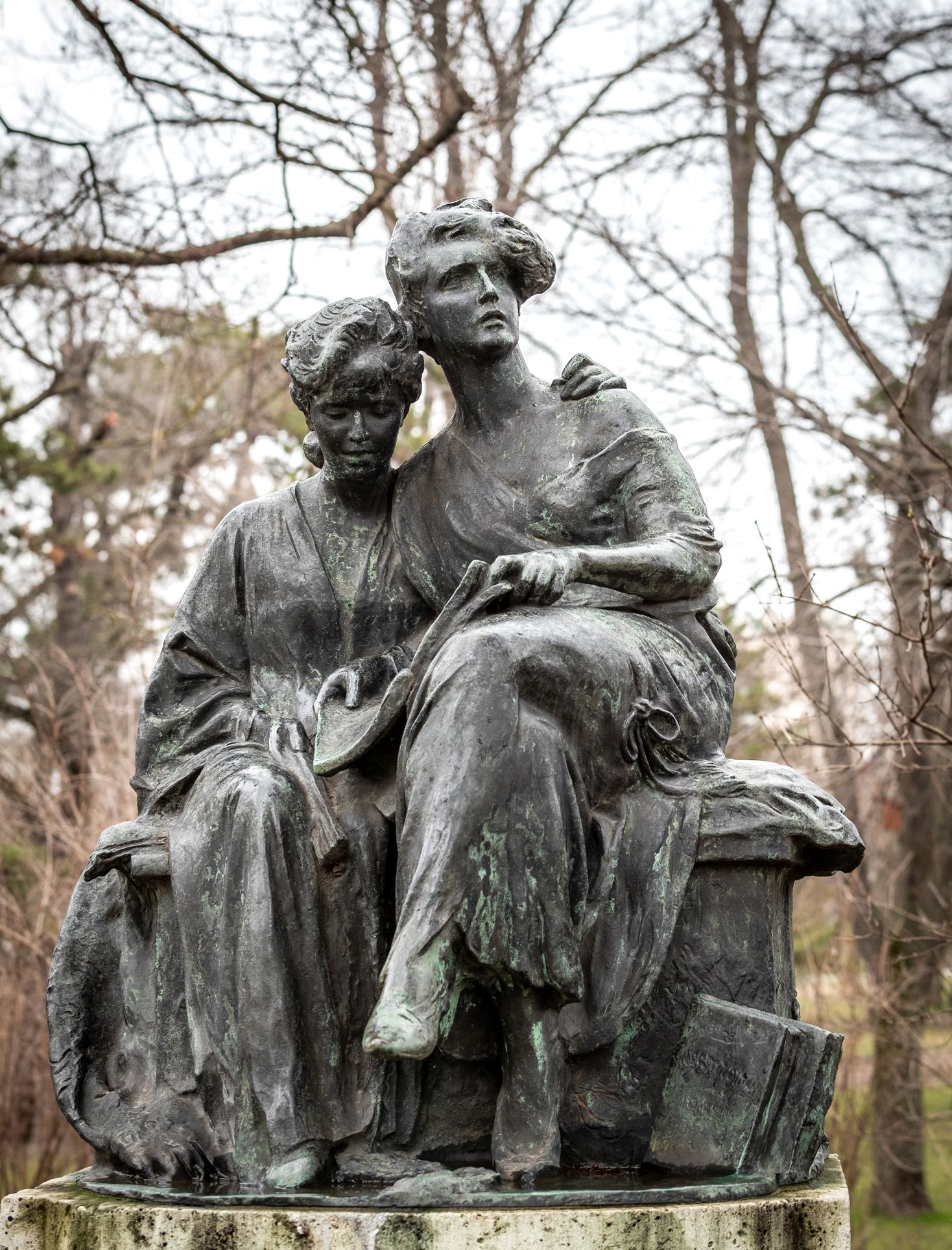
Statue by Alajos Strobl titled Reading Girls in the Városliget (Photo: Balázs Both/pestbuda.hu)
The decision to erect the Reading Girls in a public square was passed at a City Council meeting on 21 July 1927. Rafael Vignali was commissioned to cast the statue in bronze. Several assumptions were made in the press about the planned location, including Régiposta Street in the city centre and Liszt Ferenc Square in Terézváros. The latter would have been relatively close to the Jókai statue on the other side of Andrássy Avenue. It soon became clear that the statue would be placed in City Park. The intimate context of the green of the grove was important.
The statue was erected in the park in 1929 but soon had to be moved. Endre Liber reports on this in his book titled Budapest szobrai és emléktáblái:
“The council, acting on a proposal from the Committee on the Arts and Public Culture and Monuments, designated the green as the site of the statue at the junction of the promenade on the left side of Stefánia Road from the dairy parlor to the City Park lake and the Washington statue. The statue was erected here, but when the statue of Lajos Pósa was placed nearby in 1930, it turned out that Strobl's much smaller work did not stand out enough. The Council therefore, on a proposal from the competent department, ordered the relocation of the statue of the “Reading Girls”. During the on the spot inspection about the relocation of the statue on 19 October 1932, chaired by Deputy Mayor Endre Liber, the committee unanimously designated the place of the statue on Stefánia Road between the Budapest History Museum and Ajtósi Dürer Road. Based on this, the council ordered the relocation of the statue, which took place in early 1933.”
Statue of the Reading Girls in a photo taken in January 1938 (Photo: Fortepan / Image No.: 116038)
This is the quiet place where the statue has spent the past nine decades. The comprehensive rearrangement of Városliget and the renovation of Jókai Square in Terézváros brought another turn in its fate: the Reading Girls appeared on the side of the Jókai statue in the recently published plans of Jókai Square.
It is not easy to give an opinion on the decision to relocate the statue. It may evoke ambivalent feelings, as the disappearance of the statue will result in the loss of an intimate area of City Park, and placing it next to the Jókai statue will require a lot of thought on the part of the planners. PestBuda remains curious about the result, as the fate of this true masterpiece deserves our attention.
Cover photo: Alajos Strobl's Reading Girls sculpture in the Városliget (Photo: Balázs Both/ pestbuda.hu)

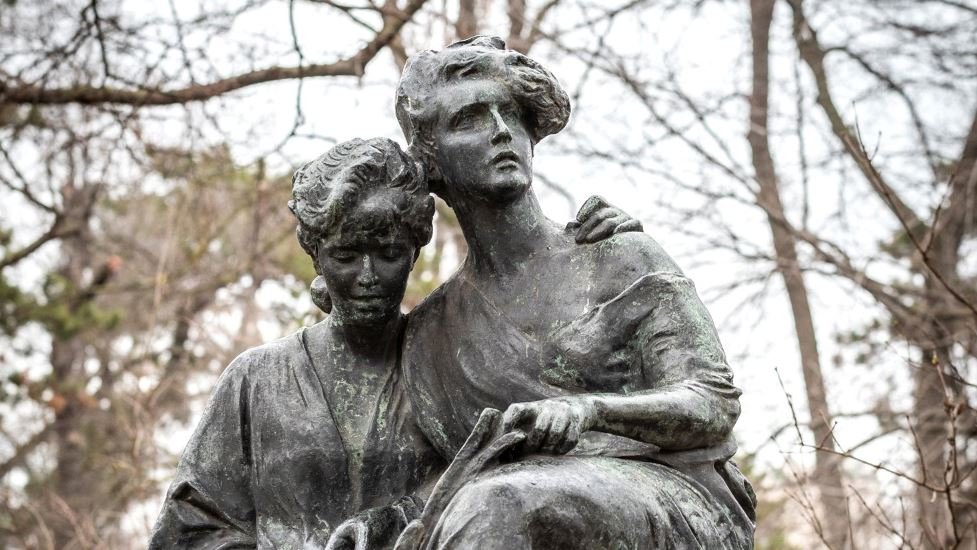

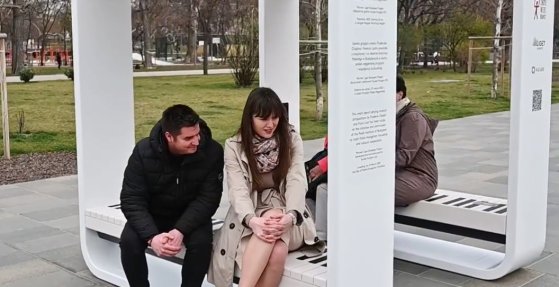
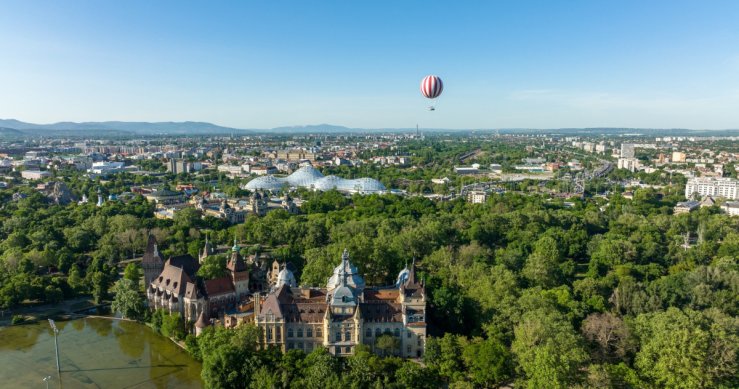


































Hozzászólások
Log in or register to comment!
Login Registration